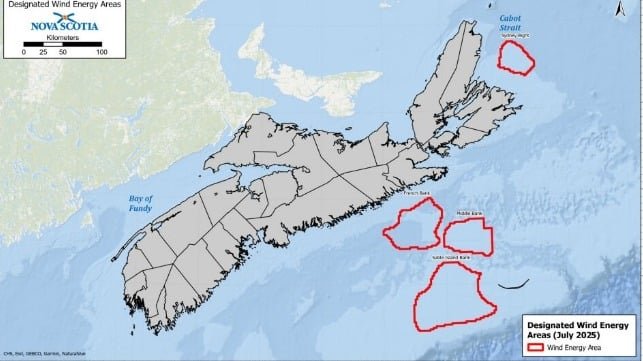Canada Takes First Steps Towards Offshore Wind Energy Development
After extensive exploration, the Canadian federal government and the Province of Nova Scotia have initiated the development of Canada’s offshore wind energy industry. This marks a significant milestone as the first four zones have been identified for development, with a call for bids expected by the end of the year.
Tim Houston, Nova Scotia’s Premier, has set forth a bold vision for the industry, aiming to transform the province into an “energy superpower.” With Nova Scotia currently having a peak electrical usage of approximately 2.4 GW, Houston envisions the industry growing to a capacity of 40 to 50 GW, making Nova Scotia an energy exporter. This vision aligns with potential opportunities arising from shifts in energy policies, such as Massachusetts potentially turning to Canada for power imports following setbacks in its offshore wind energy plans.
“With some of the top wind speeds in the world, Nova Scotia has the potential to become a clean energy superpower,” stated Premier Tim Houston. “By becoming an energy exporter, we can secure long-term prosperity for Nova Scotians.”
The plan released today includes four designated areas, three to the east of Nova Scotia (Middle Bank, Sable Island Bank, and Sydney Bight) and one to the north (French Bank). These areas have been strategically chosen based on factors such as distance from shore, water depth, and potential for fixed-bottom or floating turbines. Houston emphasized the economic potential of the industry, noting that Nova Scotia is already attracting companies using the region as a staging area for offshore wind projects.
The government’s initial call for bids will focus on licensing 2.5 GW, with a goal to reach 5 GW by 2030. The Canada-Nova Scotia Offshore Energy Regulator will oversee the bidding process following the designation of the locations. Additionally, four other areas identified in a regional assessment will be revisited for future development, including Western/Emerald Bank, which was delayed due to site complexities and public feedback.

